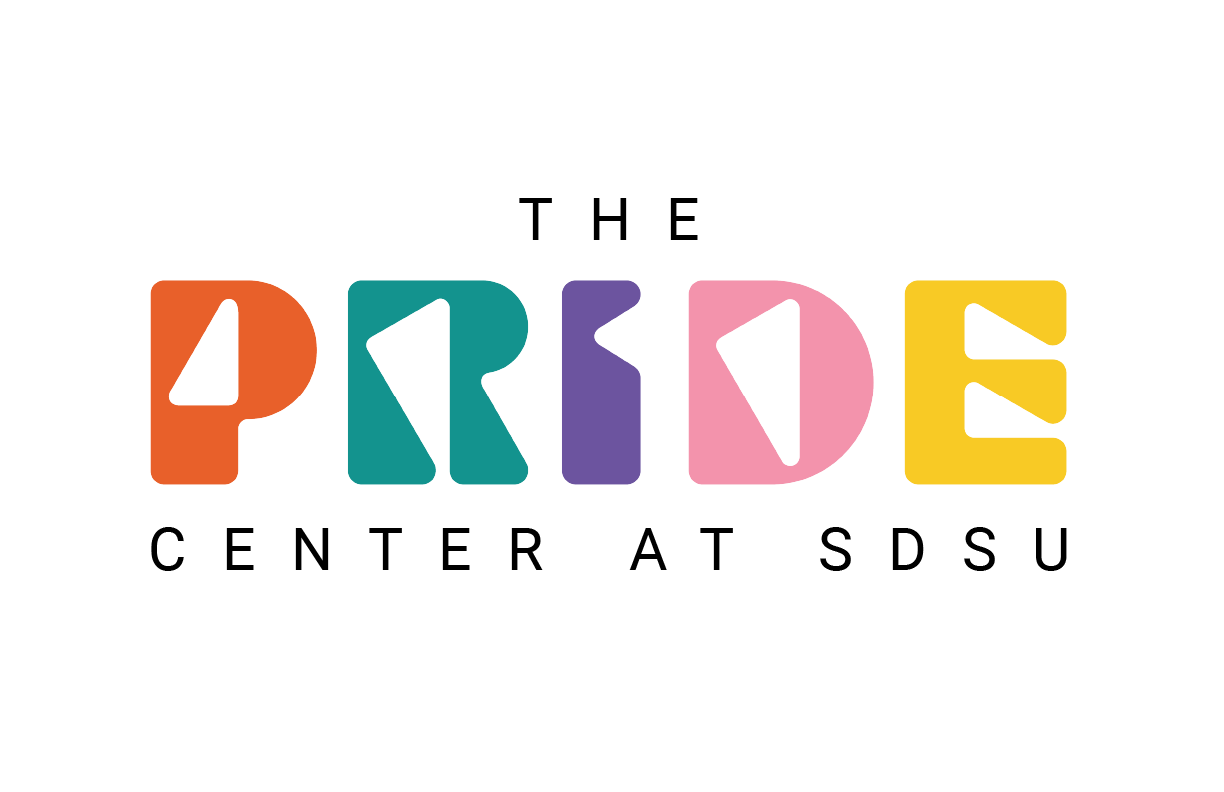The Pride Center
- 5141 Campanile Drive San Diego, CA 92115
- Academic year hours: Monday-Thursday 10 a.m.-6 p.m.; Friday 10 a.m.-4 p.m. (Closed during University holidays)
- 619-594-3520
- [email protected]
The Pride Center
Welcome
The Pride Center creates, sustains, and strengthens an open, inclusive, safe, and affirming gathering space and campus environment for individuals of all sexual orientations, romantic orientations, gender identities, and gender expressions as well as their allies. With a focus on community building and advocacy, The Pride Center offers educational and 2SLGBTQIA+-centered social justice programming for students, staff, faculty, community members, and allies of the 2SLGBTQIA+ community.
As a result of ongoing efforts to serve the campus and local San Diego 2SLGBTQIA+ community, SDSU is ranked as one of the “Best of the Best” for queer students, scoring a 5 out of 5 on the Campus Pride Index. The Pride Center also recognizes that inclusivity is not static and that identities are dynamic and fluid. As such, The Pride Center continues to strive to provide and promote a space where all 2SLGBTQIA+ people are seen, accepted, and valued. All students, regardless of race, sex, color, ethnicity or national origin, who are interested in the Pride Center are welcome. Learn more by reading SDSU's Affirming Equal Opportunity statement.
Explaining the Acronym: 2SLGBTQIA+
During the spring 2023 semester, The Pride Center, in collaboration with the Native Resource Center initiated a change from the "LGBTQIA+" acronym used across SDSU to "2SLGBTQIA+" with the intention of affirming and empowering Two-Spirit (2S) people. The hope is to create a more welcoming and safe campus community. While unable to fully capture the many experiences people have and not attempting to rigidly define any identity, The Pride Center has broken down the acronym.
SDSU resides on Kumeyaay land and it is crucial to acknowledge and understand the space(s) one occupies, including the identities within Native communities that have been erased due to colonization, racism, and violence.
Two-Spirit is an umbrella term connecting the concepts of gender and sexuality. The identity Two-Spirit does not look the same or have the same meaning for every tribe and Native community. In some tribes and Native communities, the term Two-Spirit is not used. The Two-Spirit identity is only for Native people and is not intended for non-Native people to co-opt.
Two-Spirit is placed at the beginning of the 2SLGBTQIA+ acronym to acknowledge that Native people and Native identities came before any concept of the Western identities represented in the rest of the acronym. Moreover, it brings awareness to the racism and violence Native people have faced and continue to face.

